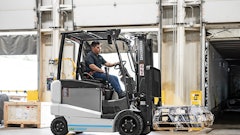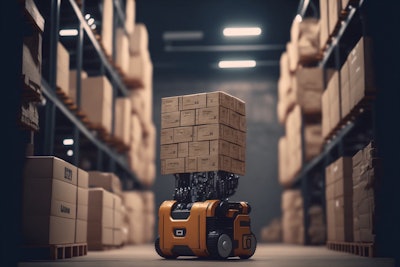
Technology advancements in robotics, automation and the Internet of Things are forging the future of supply chain material handling right before our eyes. Leaders are embracing these technologies to enable supply chains that are more automated, more connected and more data driven. Modern technology is also key to competitive advantage, driving increased speed and efficiency, reduced labor costs and improved safety and resiliency to help mitigate supply chain disruption. Automation can also help with another key objective: helping improve warehouse density, as space remains at a premium.
While the operational benefits are compelling, many companies are putting off automation and modernization efforts due to the costs. Many struggle with wrapping their heads around the fact that the time-to-value that may not be realized until many years down the road, as they persevere to navigate “the now” -- battling rising costs from both suppliers and shipping carriers.
Additionally, supply chain technology implementation can come with a steep price tag – particularly when considering significant costs for installation, engineering, and software. Often, it’s not just the cost of the technology that’s a concern, it’s also paying for the “soft costs” and getting the right resources in place to make it all work as intended.
But creative leasing solutions can solve these issues, blazing the trail for companies to modernize material handling and be in the best position to reap the benefits.
Automation: What’s New and Now on the Materials Handling Scene
Industry leaders are prioritizing automation, looking to deploy robotics and other warehouse technologies. According to The State of the Material Handling Automation Market in 2023. 31% of facilities surveyed plan to deploy material handing equipment in 2023, and nearly 70% have some of their budgets earmarked for new material handling equipment solutions in the next year. This is why the global warehouse automation market is projected to top $69 billion by 2025.
What is trending in automating existing manual materials handling processes? This is different for every company, but it can involve implementation of an individual machine, to a fleet of forklifts and warehouse-level robotics, to the total re-engineering of a distribution center. The latter often involves transformation from fully manual, wide aisles with forklifts to more automated systems and denser distribution centers.
Autonomous systems are popular to address the significant labor costs and constraints the industry is facing. These include warehouse automation solutions, such as sortation equipment, automated guided vehicles (AGVs), automated storage and retrieval systems (ASRS) and autonomous mobile robots (AMRs).
Leasing Can Conserve Capital, Provide Flexibility
In the State of the Material Handling Automation Market in 2023 research, when asked to name the biggest obstacles to future automation plans, budget (41%) and cost/ROI (40%) topped the list.
When organizations purchase equipment or technology, vendors expect a significant down payment upon order – sometimes up to 50% of the total project cost. These days, given supply chain challenges, that means companies may have to wait many months – perhaps up to a year – for that equipment to arrive after paying this money out.
Leasing can conserve capital by providing 100% financing while the leasing partner makes all upfront payments. This enables businesses to not have to make a payment until the equipment is delivered; in this way, they can immediately gain the benefit of these solutions when the lease commences.
Additionally, there’s the option to wrap all project costs such as engineering, software, services, freight and installation into one monthly payment. This is significant because these project costs can sometimes account for 50 percent of the total installation. So, for a $20 million project, this may amount to $8 to $10 million in project costs. Banks often won’t finance the soft project costs because there are no assets associated with them.
In addition to the above-mentioned advantages, leasing provides flexibility at the end of the lease term with the option to purchase equipment or upgrade to newer equipment. In this way, leasing reduces the risk of obsolescence by passing it on to the lessor. This can provide significant competitive advantage, enabling organizations to never be shackled with “legacy lag.”
This is important since older equipment can leave companies subject to operational inefficiencies. In fact, one study showed U.S. businesses lose up to $1.8 billion each year in wasted productivity due to obsolete technology. Higher upkeep and maintenance costs of older equipment, in addition to security risk vulnerability from outdated security measures, represent additional forms of “wastage” and risk that companies must mitigate.
Key Considerations
Many equipment and technology vendors have jumped into the equipment leasing or robotics-as-a-service game. However, businesses often do not realize the credit risk in these scenarios can be considerable. This is due to the fact that many equipment and technology vendors are not set up as a receivable to collect and allocate lease funds in the same way as lessors with a long history in the industry. This is especially so with lessors that have gone through all the ups and downs of both bull and bear markets and therefore have put processes in place to remain solvent and maintain good credit standing.
An experienced leasing partner can take the burden of risk off the vendor by billing the customer directly and covering the costs of the equipment and services up front. This allows equipment and technology vendors to focus on what they do best – focusing on running their business and maintaining their equipment.
The decision to lease or own equipment and technology depends on a company’s specific objectives, so it’s beneficial to conduct a cost analysis to determine the best approach. Typically, this is done through a discounted cash flow analysis, which examines factors including the timing of payments, interest rates, tax benefits and other financial considerations in each arrangement. Financial models are readily available to help with this type of analysis and it may be helpful to consult with a financing expert.
The supply chain industry is undergoing a significant transformation, and innovations in material handling equipment and tools are paving the way for greater efficiency and resiliency. Creative financing can offer organizations a powerful lever to ensure they can keep up with the pace of progress.


![Pros To Know 2026 [color]](https://img.sdcexec.com/mindful/acbm/workspaces/default/uploads/2025/08/prostoknow-2026-color.mduFvhpgMk.png?auto=format%2Ccompress&bg=fff&fill-color=fff&fit=fill&h=100&q=70&w=100)
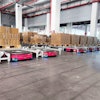

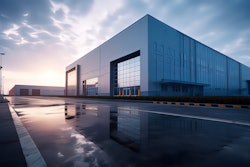

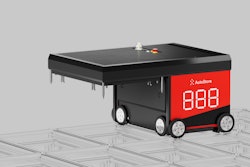
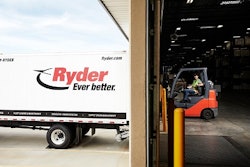

![Pros To Know 2026 [color]](https://img.sdcexec.com/mindful/acbm/workspaces/default/uploads/2025/08/prostoknow-2026-color.mduFvhpgMk.png?ar=16%3A9&auto=format%2Ccompress&bg=fff&fill-color=fff&fit=fill&h=135&q=70&w=240)



